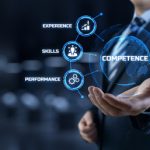Employees are the foundation of an organization’s growth and success. The commitment of a company towards its human resource management plays a crucial role in setting the right tone for a productive workplace with happy and positive employees.
A common problem among many organizations is that they prioritize employees only through the onboarding process, neglecting the holistic employee lifecycle involved. This is also a key reason for high employee turnover and reduced employee morale.
Recognizing the entire employee journey from onboarding to offboarding is vital to cultivating a positive and thriving work environment. Here is all you need to know about managing an employee’s lifecycle at each stage and how to implement them effectively.
Recruitment & Onboarding
As you can already guess, the first stage of an employee lifecycle starts with recruitment. This involves filtering the right potential candidate for a specific job role among a pool of talent. It is very important to ensure the candidates get a good impression of the company during this process.
Once the right employee is hired through a strategic and fool-proof selection process, the next step is to enrol them into the company’s onboarding program, to get them accustomed to the company culture and work structure. Although often overlooked, this stage is instrumental in helping new employees blend in with the current organizational setting.
Performance Management
As new hires progress in their positions, the need for performance management becomes necessary. Employees are better able to understand the expected targets from their job roles when clear objectives and goals are established. It provides them with a road map so they can ensure that, as team members, they are on the right track.
By identifying performance gaps and providing continuous constructive feedback, training, and other skill development programs through an effective ESS portal or HR system, employees can develop their capabilities to suit their roles in the team better. It also helps employees stay up to date, adapt to changing conditions, and improve general competency and resilience.
Employee Engagement and Satisfaction
As often said, happy employees create happy clients and productive workplaces. Employee engagement and satisfaction go hand in hand and are essential in maintaining productivity and harmony in the workplace.
Timely payouts, instant recognition, active reward systems, opportunities for growth, effective training programs, and initiatives to prioritize mental and physical well-being are key factors influencing employee satisfaction.
The probability of happy and satisfied employees switching to another job is also significantly less, reducing the risk of employee turnover. This results in significant cost savings because there is no longer a need for constant hiring and recruiting to replace vacant positions.
Offboarding & Retention
Employee offboarding is the process of departing an employee when they leave a company. While most companies avoid this step as part of their human capital management strategies, it is one of the few opportunities a company has to understand employee perceptions of the company, how to improve the retention rate and enhance the overall employee experience at the company. Some questions to cover in exit interviews or questionnaires include,
- How can we be better for our new employees? Which areas should we focus on?
- What growth opportunities would have retained you here?
- How was this work environment?
- Did you feel supported by your managers and co-workers?
- What encouraged you to look for new opportunities?
- What was your best day here? Any accomplishments you remember? Or your worst day?





